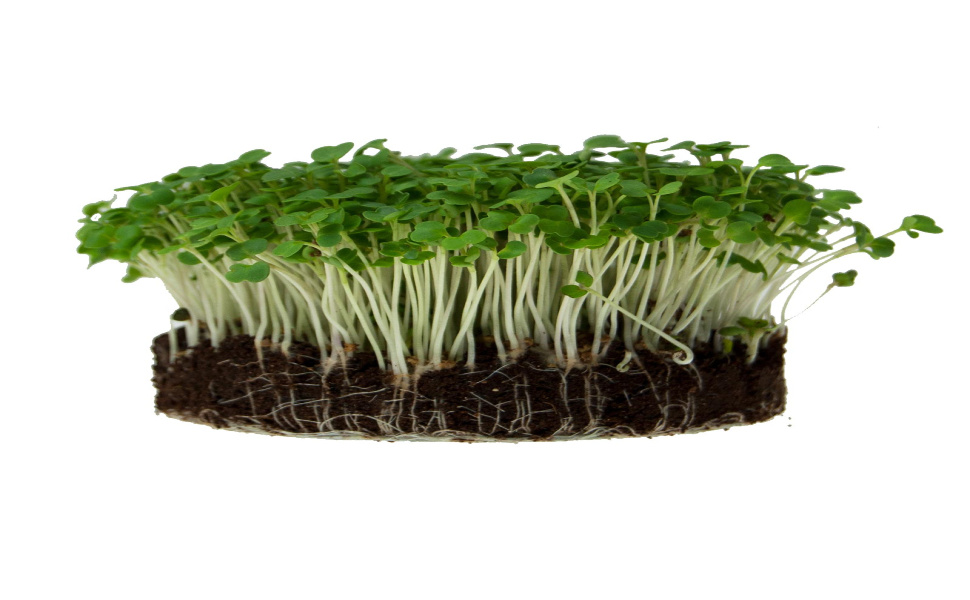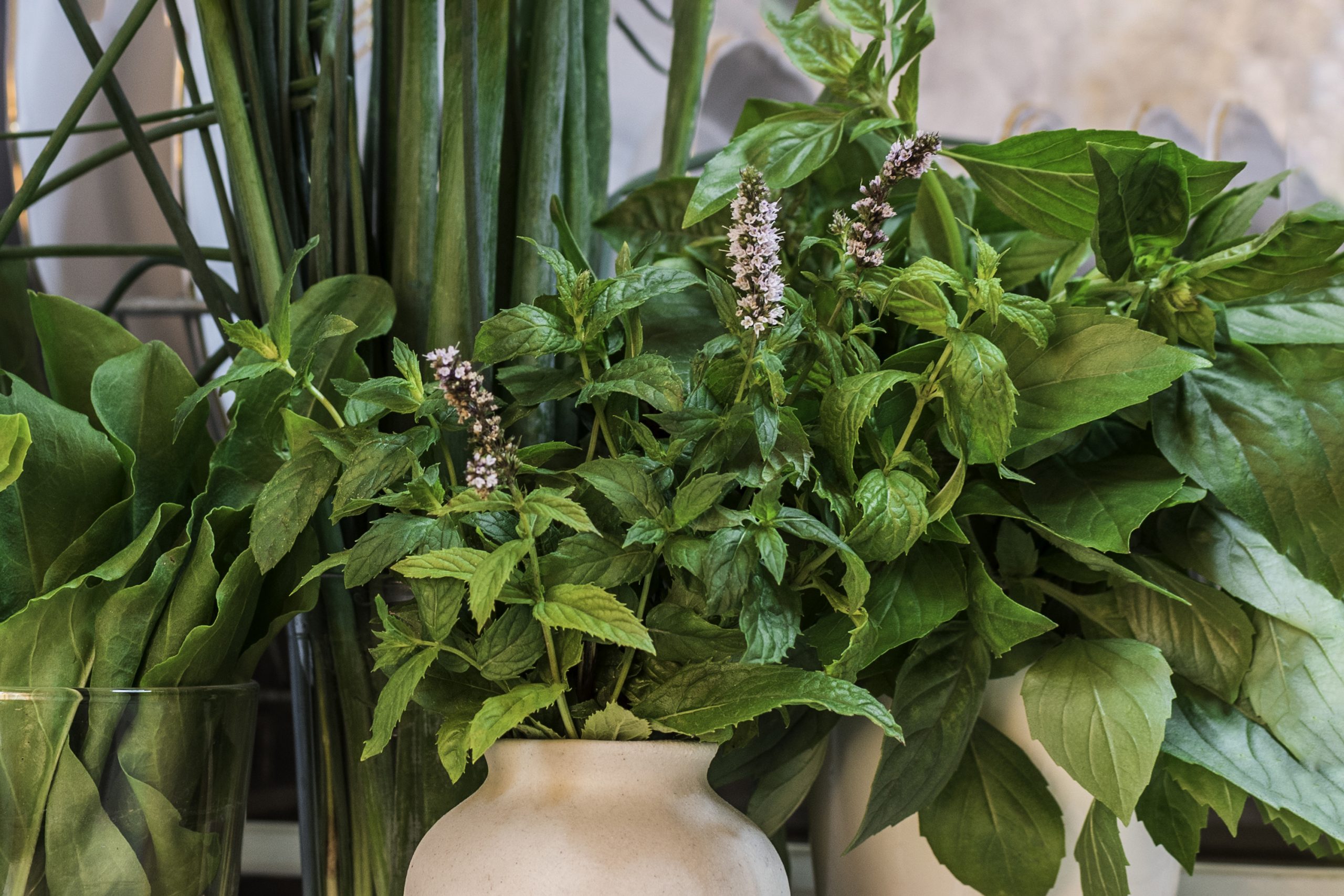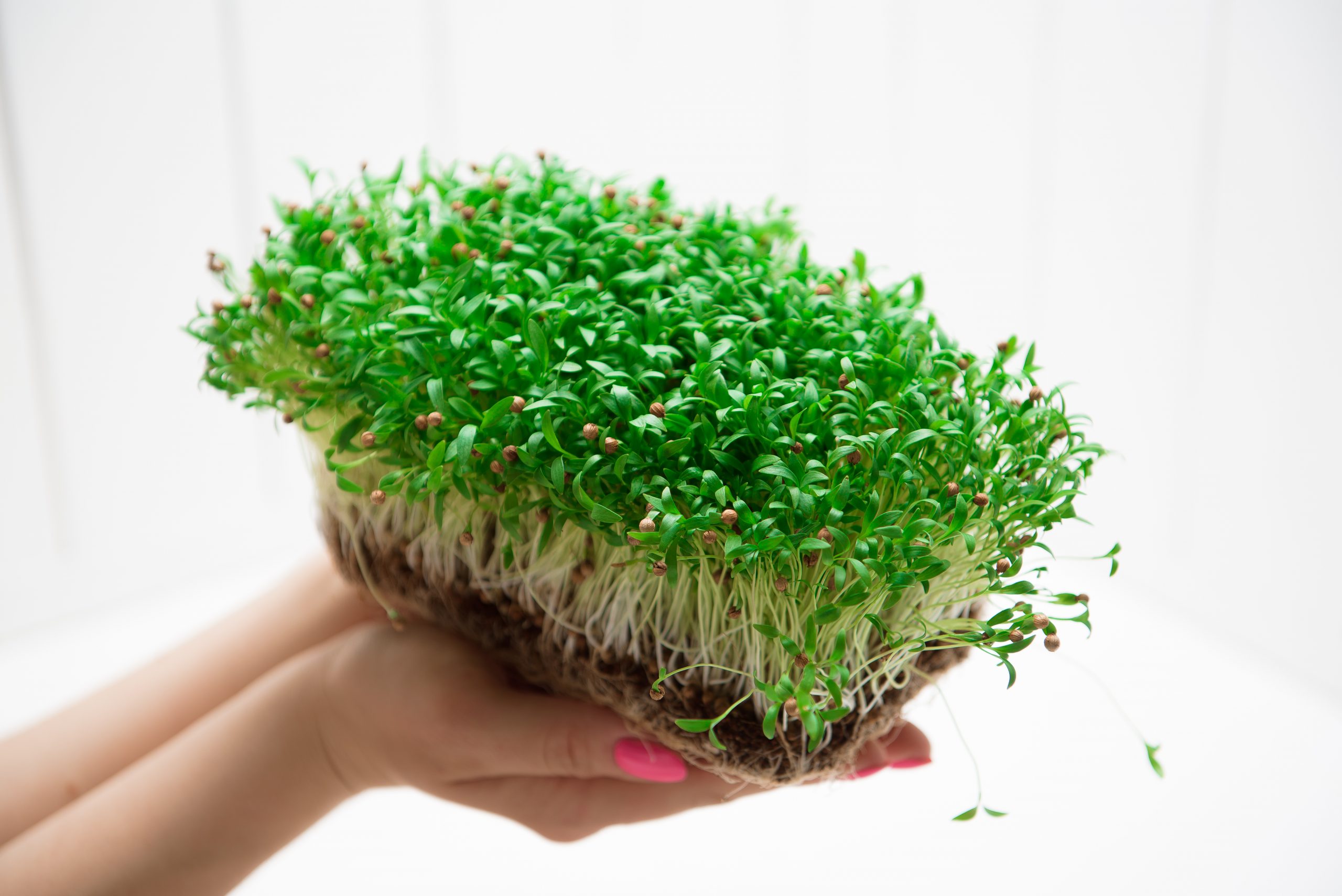If you want to grow tasty microgreens, you may have considered popular options like kale, arugula, or even carrot seeds.
But have you ever given sunflowers some consideration?
Many people overlook the potential of sunflowers to produce delicious, crunchy microgreens – but the tiny sunflower is a nutritional powerhouse!
There are plenty of reasons to learn how to grow sunflower microgreens – here, and we’ll tell you everything you need to know to get started.
What Are Sunflower Microgreens?
Microgreens are tiny seedlings of edible herbs, vegetables, and flowers. They are harvested young when they’re only about one to three inches tall. With a delightful aroma and a concentrated dose of nutrients, microgreens come in all colors, textures, and varieties. The most popular plants include spinach, arugula, basil, and kale.
One of the many benefits of growing microgreens is that they mature quickly. Although you will use regular seeds to grow your microgreens, you don’t have to wait for the full 30 to 100 days for your plant to mature.
Instead, microgreens are ready to go in a fraction of that time – about two to three weeks.
Sunflowers can easily be grown as microgreens – and there are plenty of reasons to do so. They have a delicious nutty flavor and a crunchy feel. They aren’t like any other kind of microgreen you’ve tried before but taste wonderful in wraps, salads, sandwiches, soups, and more.
Plus, they’re incredibly easy to grow.
Planting Sunflower Microgreen Seeds
As with growing any type of fruit, vegetable, flower, or herb, it’s essential that you start with a high-quality seed.
When you’re growing sunflower microgreens, you can use any kind of sunflower seed, but black oil seeds tend to be the cheapest. Since these are generally sold as birdseed, you can buy them in bulk for a fraction of the cost of what you would pay for seeds from a seed supply company.
However, if you want to make sure the seeds have not been treated and will all germinate successfully, you may want instead to purchase certified organic seeds from a seed supply company. While most people have good results when using “birdseed” sunflower seeds, seeds that are designed for planting will have better generation rates.
Soak your sunflower seeds for 12 hours in a cup of warm water. This will help soften the hard shell of the seed and prepare it for planting.
After 12 hours, drain the seeds and rinse them thoroughly. Soak them once more for an additional 12 hours. After this time, you should notice that the seeds begin to sprout. If most of them haven’t sprouted, you can soak them one or two more times.
Next, fill a tray with lightly moistened seed starting mix. Do not use soil out of your garden. Young seedlings can be fragile and are particularly vulnerable to the diseases and pests that can be found even in healthy garden soil.
You can grow sunflower microgreens outdoors, but it’s much easier to grow them inside. You’ll have better control over the planting environment and conditions.
Plus, seed starting mix (or just general potting mix) is better for microgreens because they contain a well-balanced dose of nutrients.
Your container doesn’t need to be very deep since your sunflowers won’t have the opportunity to set aggressive roots. You may want to select a planting container that is wider than it is deep to give yourself room to grow hundreds of seedlings in the same tray.
You don’t have to purchase a special seed starting flat either – you can use a pie plate or something from around the house, too. Just make sure the container has good drainage. You may need to poke holes into the bottom of the container.
Sow your seeds thickly across the tray. Cover the entire tray with another tray to block out the light – certain microgreen seeds, like carrots and sunflowers, prefer to be kept dark and moist while they are germinating.
Make sure this top tray also has holes poked into it, not for drainage but for ventilation. You do not need to cover the seeds with additional soil when you plant – the tray will keep things enclosed for you.
Caring for Sunflower Microgreens
It is very little you need to do to care for sunflower microgreens, but you may be surprised to learn that the steps for caring for sunflower microgreens are a bit different than caring for those of other greens.
For example, you still need to water the plants once or twice a day. However, you won’t do this by misting the plants, as you would with other microgreens, but instead by watering from the bottom up.
If this sounds complicated and overwhelming, it’s not. All you need to do is set the tray in a larger pan of water for a few minutes. This will help keep the roots moist but it won’t allow the plants to become overly sodden.
Once your shoots start to emerge, they’ll begin pushing up on the top tray. This is usually only a few days after you’ve sown your seeds. You can then remove the tray so that the seedlings have access to light.
While the location of your tray doesn’t much matter while the seeds are germinating, once you remove the top tray, light is essential. Put the tray in front of a bright, south-facing window, or put it under a grow light. A grow light is ideal, as it can prevent the seeds from becoming “leggy” as they reach toward the window for light.
Keep watering your sunflower shoots on a daily basis. You can continue with the “bottoms-up” watering method, or you can switch over to misting them twice or three times a day.
Harvesting Sunflower Microgreens
Sunflower microgreens are ready for harvest when they’re just four inches high. Try not to let them get too far past this stage, as they can be too tough as they get older.
To harvest, cut the plant off at the soil level with a pair of sanitized scissors. You can leave the roots in the soil and then sow a new batch of seeds directly over the top – no need to pull them out. Instead, the roots will fertilize the soil so that your next batch of sunflower microgreens is even healthier than the last.
Storing and Serving Sunflower Microgreens for Later Use
Sunflower microgreens don’t last very long in the fridge, so you’ll want to eat them up as soon as possible. They taste great in salads and sandwiches or even as snacks on their own.
The beauty of growing microgreens indoors is that they mature quickly and don’t get very dirty, either. You might need to give them a quick spritz of cold water to remove the odd particle of dirt here or there, but for the most part, they require little cleaning.
You can stash your sunflower microgreens in a sealed plastic bag. They will last in the refrigerator for up to five days and will stay crisp and fresh if stored in this manner. However, you should eat them as soon as possible after harvesting them for the best crunch and flavor!
Growing sunflower microgreens is not only incredibly easy, but it’s also a lot of fun. Since the shoots mature so quickly, you’ll be able to push out dozens of batches per year – giving you all the microgreens you could possibly want (and then some!).









